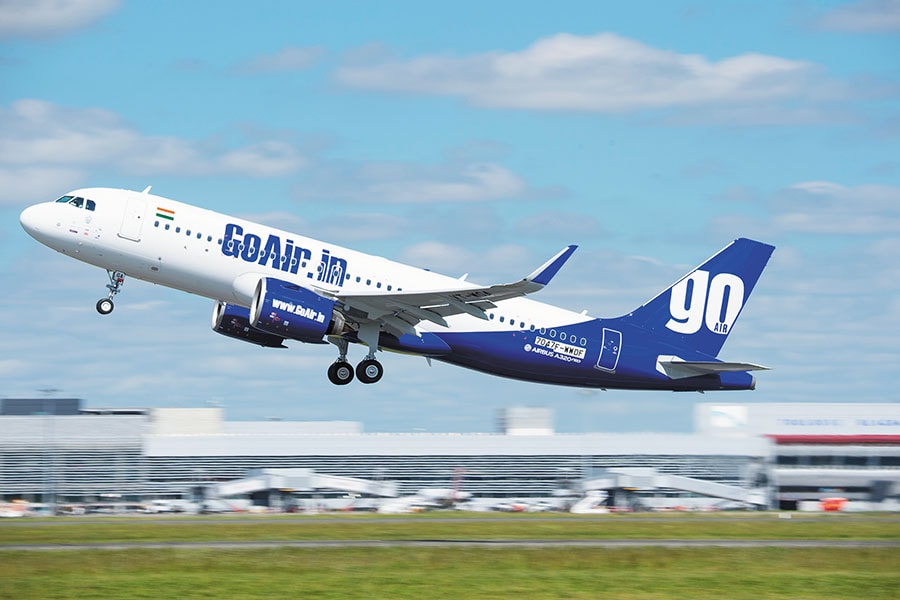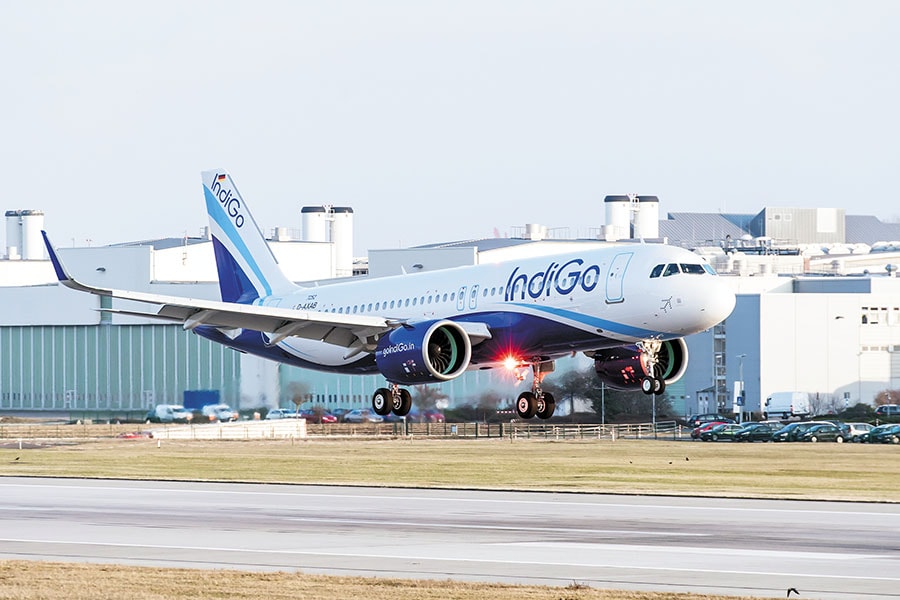
Grounded IndiGo, GoAir aircraft were not on a wing and a prayer
DGCA's decision to ground A320neo aircraft with just one faulty engine lacks technical merit, say analysts
 The DGCA grounded 11 twin-engine A320neo aircraft in March. Experts say such planes can fly on one engine
The DGCA grounded 11 twin-engine A320neo aircraft in March. Experts say such planes can fly on one engine
Image: Airbus
An aircraft’s engines, which conspicuously hang below its wings, generating the required thrust for propulsion, are said to be the heart of an aeroplane. So much so that when recurrent in-flight engine shutdowns were reported in some Airbus A320neo aircraft, powered by a certain series of Pratt & Whitney (PW)-made engines, India’s civil aviation watchdog couldn’t help but sit up and take notice.
On March 12, the Directorate General of Civil Aviation (DGCA) decided to ground 11 twin-engine A320neo aircraft—eight of them operated by IndiGo and three by GoAir—with at least one faulty PW engine. Two other airlines, Air India and Vistara, which also fly the A320neo, were not affected by the order as they use engines made by CFM International.
The groundings have shaved off 1-2 percent from India’s overall domestic air travel capacity. According to the ministry of civil aviation, 378 flights were cancelled between March 15 and 21, compared with total departures of 18,781 during the same period. The capacity impact is likely to remain the same until the grounded aircraft resume operations. “The ministry has been monitoring prices on the impacted routes: There has not been any significant or abnormal increase in air fares,” read a statement from the civil aviation ministry.
The trivial impact on capacity and prices apart, the brouhaha over air safety that followed the groundings “was as though the world had come to an end”, believes Devesh Agarwal, editor, Bangalore Aviation, an aviation news web portal.
Given that aircraft are designed to fly with just one engine, has the DGCA overestimated the gravity of the issue?
Agarwal says the actions of the DGCA lack “merit on technical grounds”. It is a view shared by the European Aviation Safety Regulator (EASA), which is responsible for air safety in Europe and also the A320neo’s original certification agency.
 Image: Airbus
Image: AirbusHowever, BS Bhullar, director general, DGCA, says, “We [as the regulator] are responsible for the safety of passengers. We never react to what another [aviation] regulator says. So far, we haven’t [heard] anything from anybody [with regards to the grounding].”
In reality, the PW1100 series of Pratt & Whitney engines, at the centre of the controversy, is being used by 20 airlines across the world. And only 43 engines—or less than 10 percent of the total engine type deployed—have been found to face problems.
“For the small sub-population of 43 impacted engines in operations [globally], EASA has approved operations [of aircraft] with [just] one engine on wing from this sub-population,” Pratt & Whitney tells Forbes India. The engine manufacturer goes on to explain that in early February it took immediate action after identifying an issue related to “the knife edge seal in the high pressure compressor” of 43 PW1100G-JM engines that powered the A320neos.
“ This kind of a reaction [by DGCA] demonstrates lack of objective view and professional approach to the problem.
By February 21, Pratt & Whitney says it received all necessary approvals from EASA for the revised configuration of the engines and began shipping modified engines by March 1. “We are working closely with our Indian customers to minimise disruption and mitigate grounded aircraft no later than the end of the second quarter [June],” says a spokesperson for Pratt & Whitney.
IndiGo, meanwhile, stated that two of its grounded aircraft resumed operations on March 20 and the remaining are expected to be airborne in the coming weeks.
In the same vein as EASA, the US Federal Aviation Administration, the Japanese Civil Aviation Authority and the Chinese Civil Aviation Authority have not grounded any aircraft. “What is it that the DGCA knows all of a sudden that these civil aviation regulators do not know?” asks Agarwal.
EASA has only laid down two directives: One, an A320neo aircraft with two faulty engines has to be grounded; and, two, planes with one faulty engine are not to be used for ETOPs (extended range twin-engine operations). ETOP is the time for which a twin-engine aircraft is permitted to fly on one engine in case the other engine is faulty. It is three hours for the A320 family. In this time, the aircraft can reach the nearest airport even if it’s in the middle of the ocean when an engine failure occurs. “It means those aeroplanes having at least one affected engine for long-haul flights should not be used,” clarifies an EASA spokesperson.
To be sure, every twin-engine aircraft is certified to fly and take off even if one engine fails. “A Boeing 747 or even an Airbus 380 with four engines is designed to fly with a single engine. That’s the degree of aircraft safety,” says Sridhar Krishna, chairman and managing director of Sankhya Infotech, which develops safety-related software tools for airlines and aircraft manufacturers. The Bengaluru-based company has built simulation models for the maintenance of the M53 engine on the Mirage 2000 fighter jet and for the M88 engine on the Rafale fighter.
“My only issue with regards to the reaction of DGCA was that it was too late and too radical in comparison to EASA,” says Krishna. He recalls a similar move by the DGCA after the crash of the erstwhile Indian Airlines A320 aircraft in Bengaluru in 1990. “It was the first A320 which was inducted by Indian Airlines that had crashed. After that, the regulator grounded all A320s in India for nearly two years,” says Krishna.
Over 8,000 A320 aircraft—the workhorse for many airlines around the world—have been built by Airbus since 1986. “This kind of a reaction [by DGCA] demonstrates lack of objective view and professional approach to the problem,” says Krishna.
Globally, the safety record of the aviation industry has been growing from strength to strength. “The chances of you slipping in your bathroom and cracking your skull are greater than you dying in an airplane accident,” Agarwal quips.




